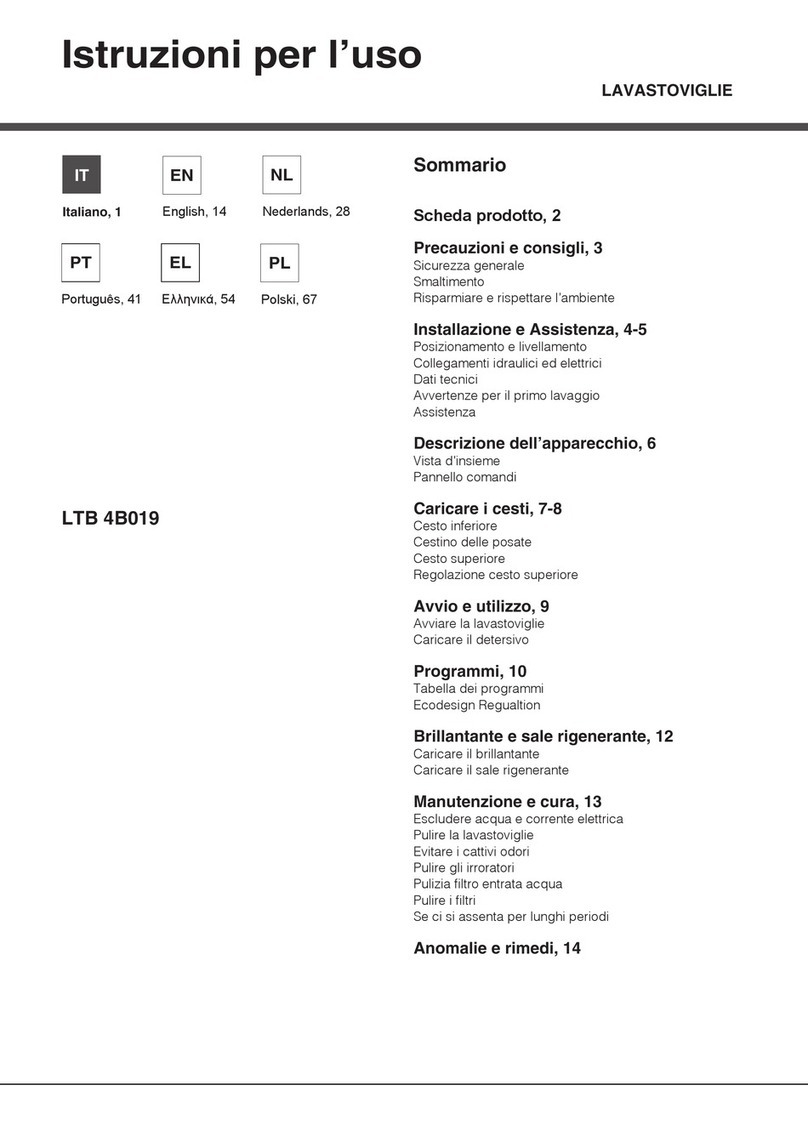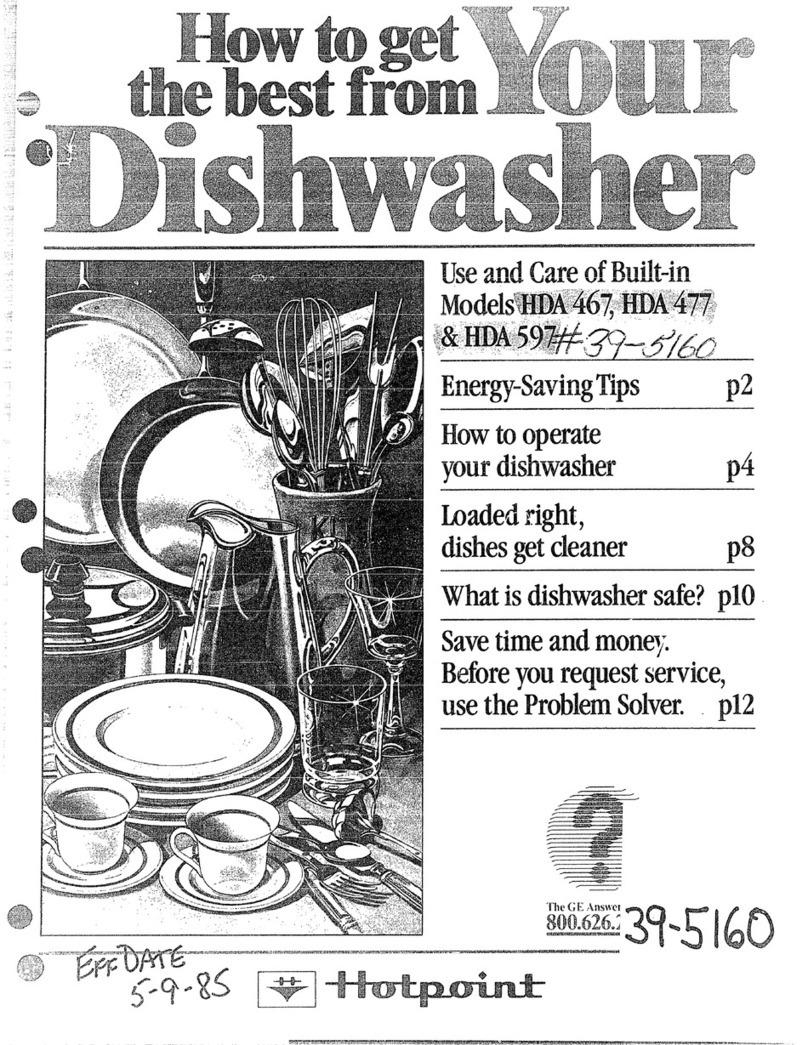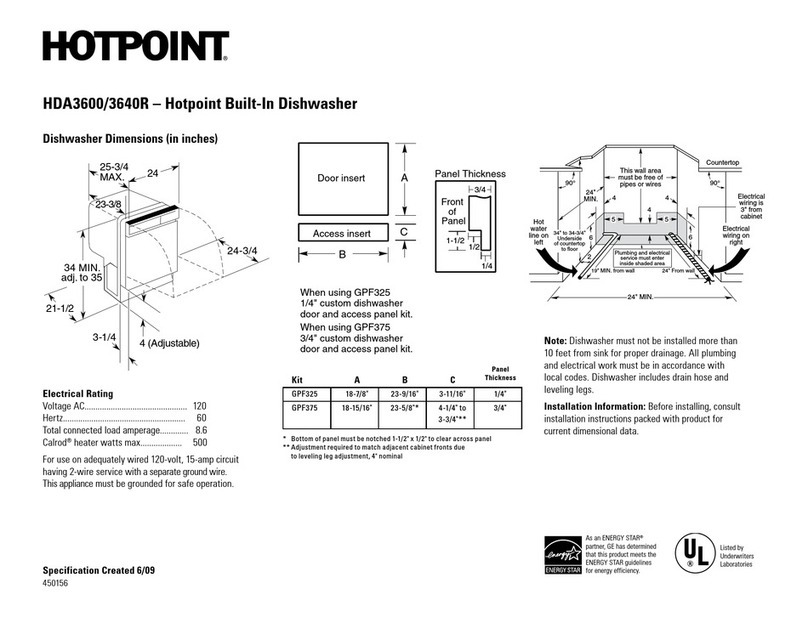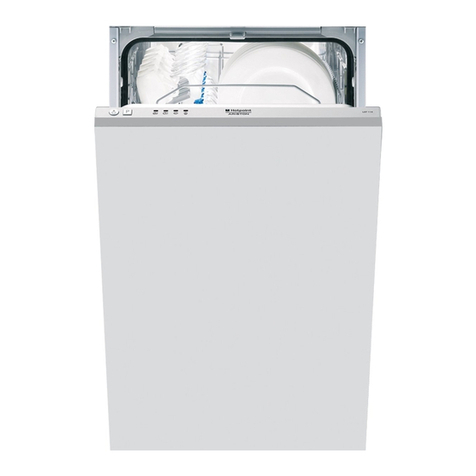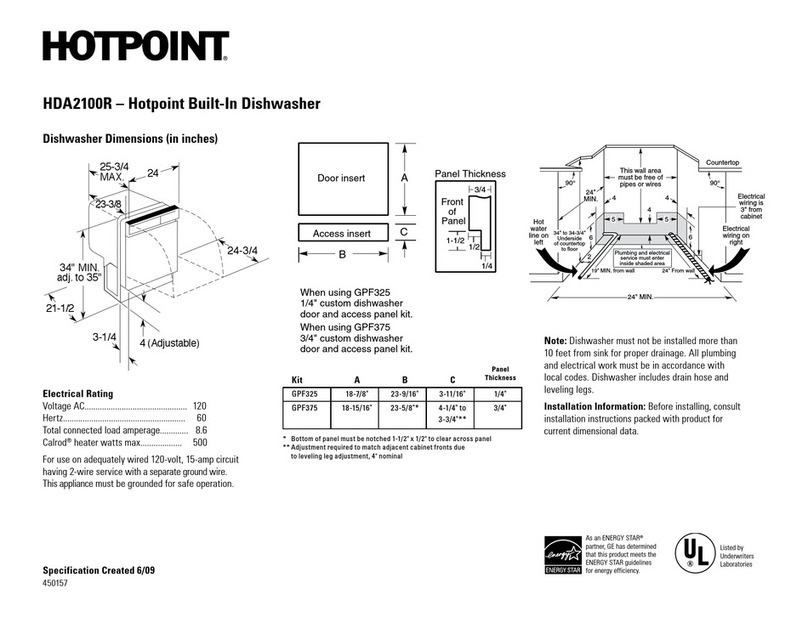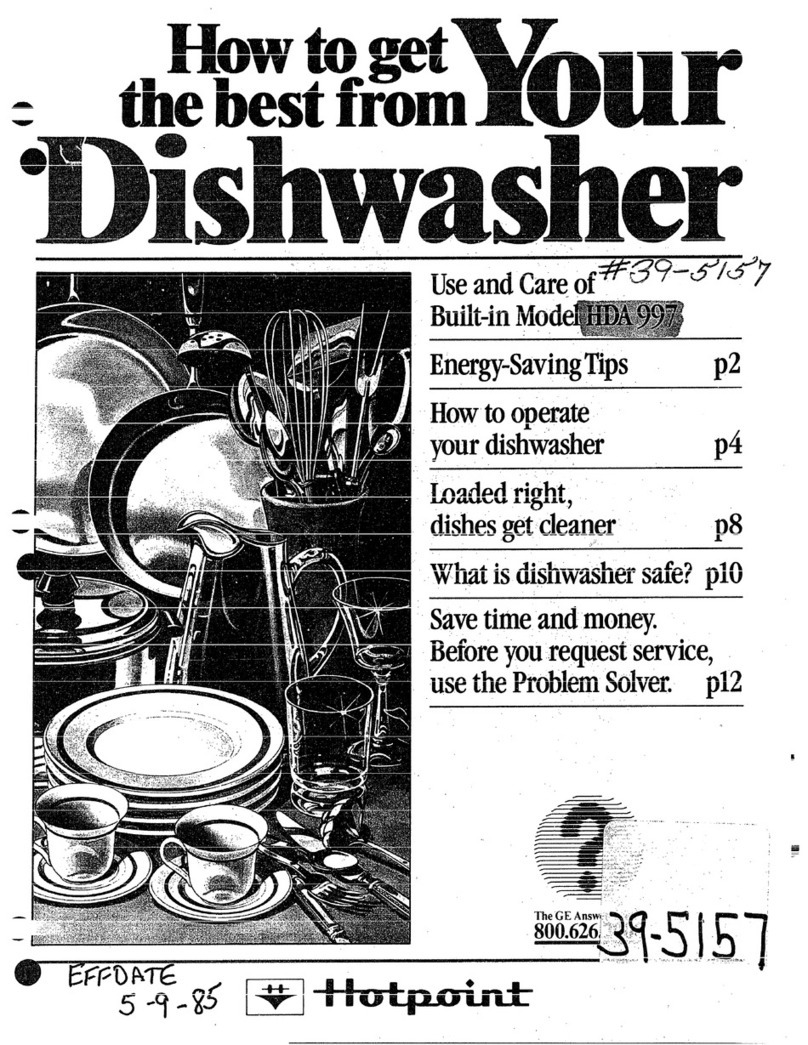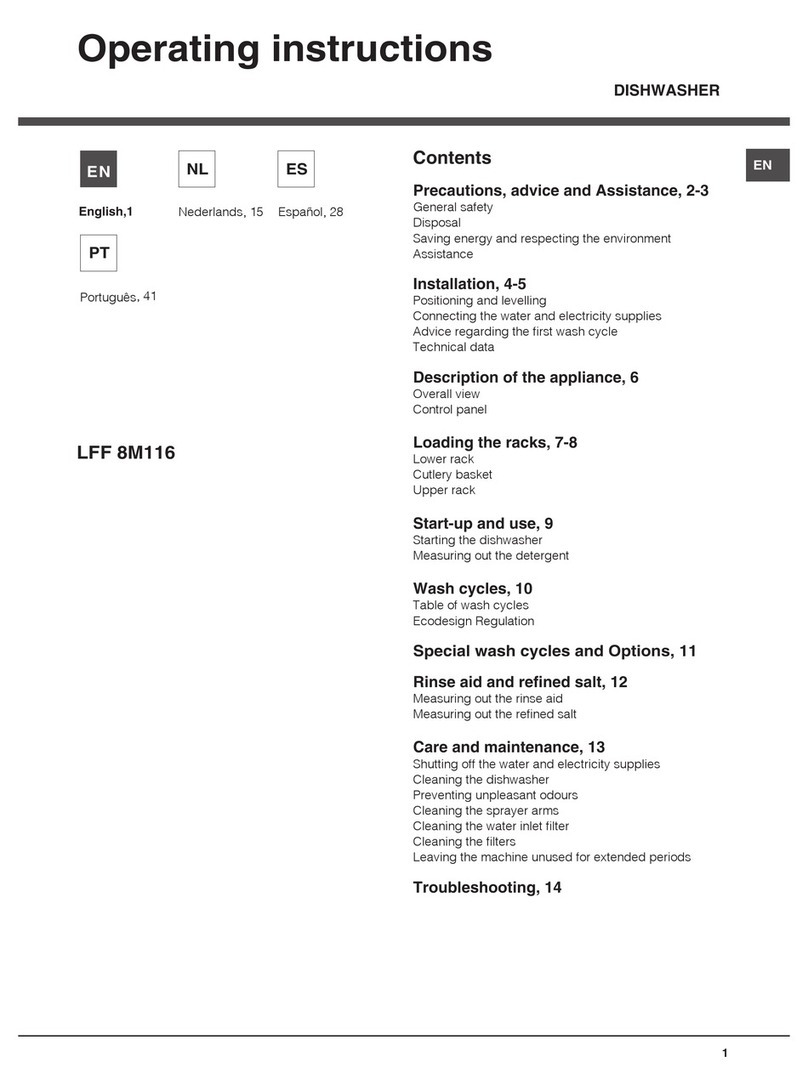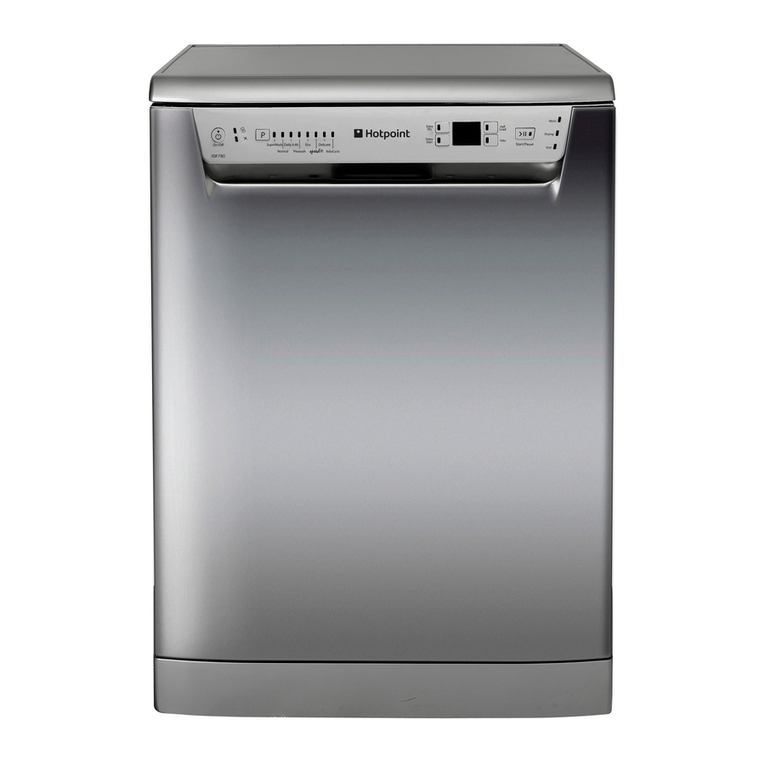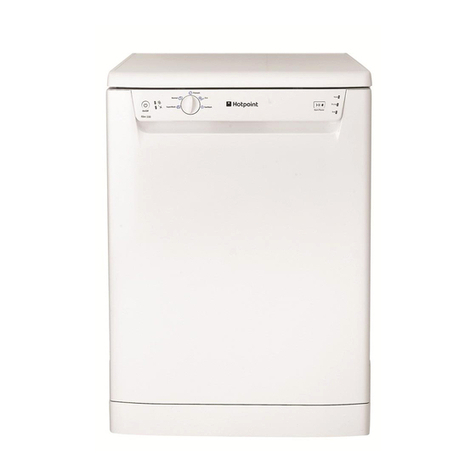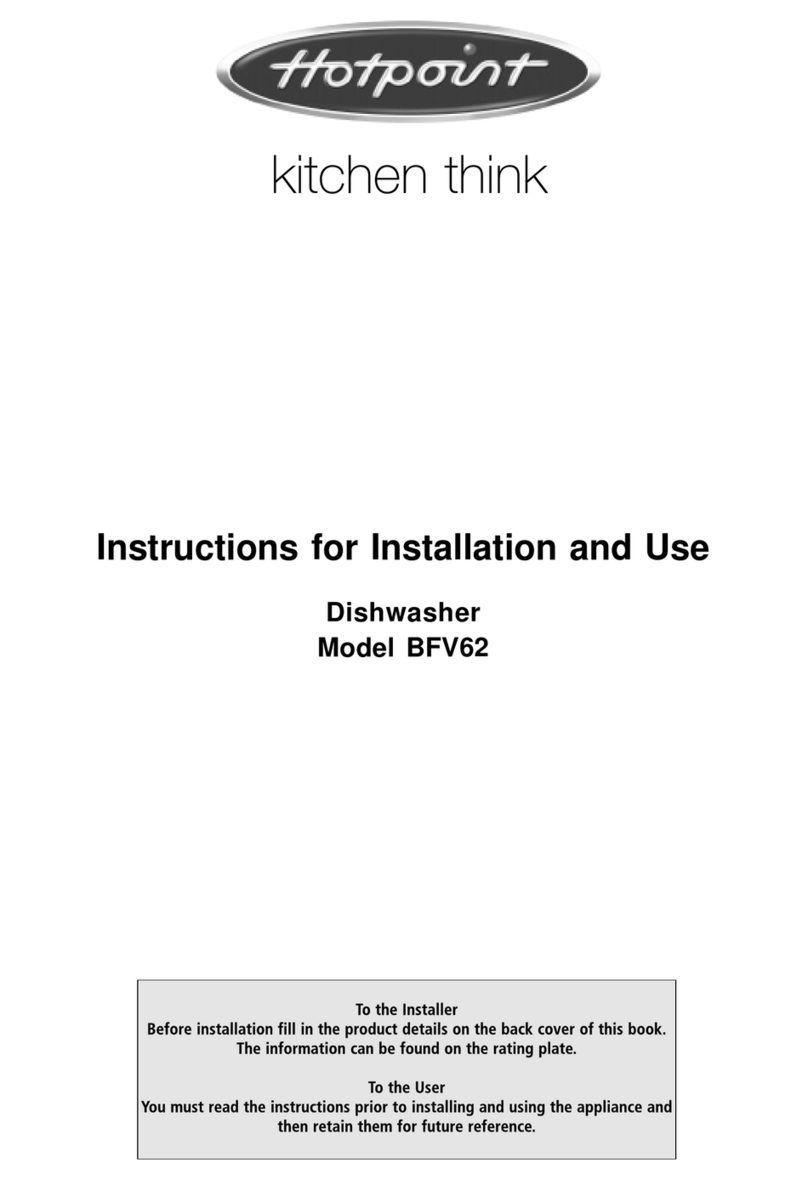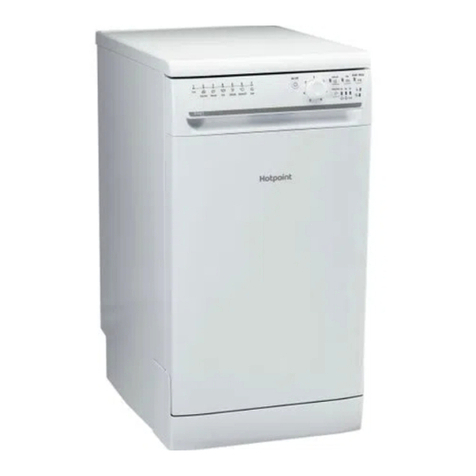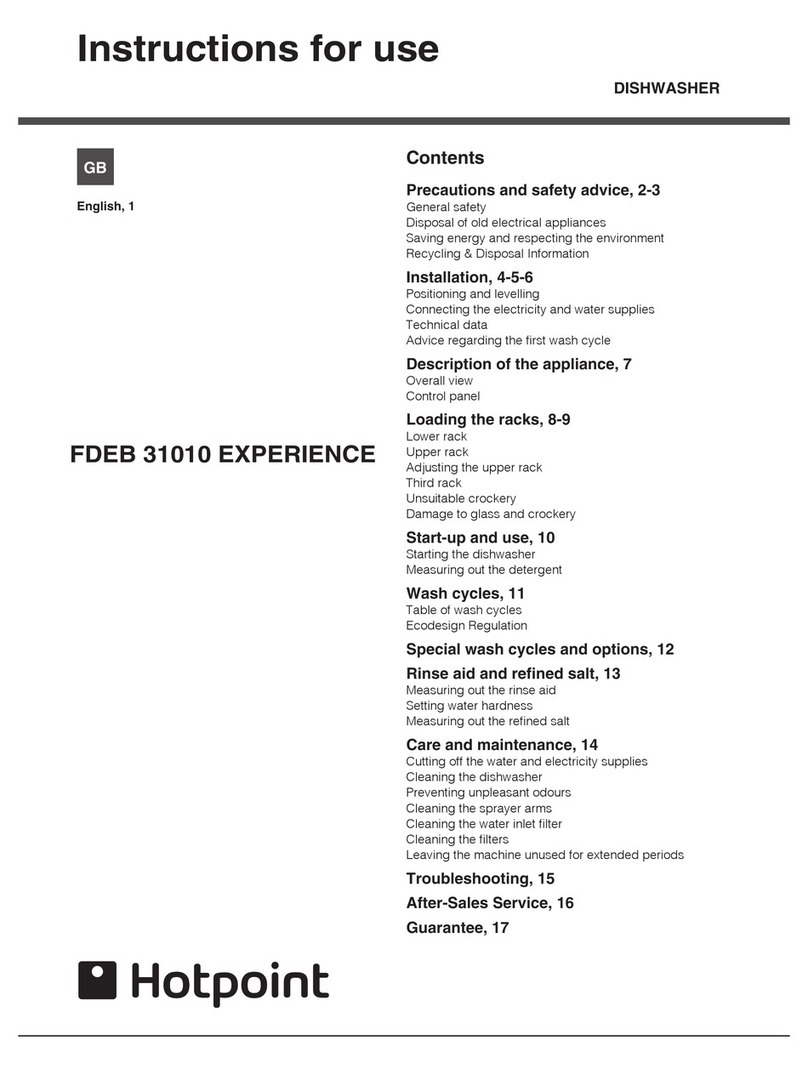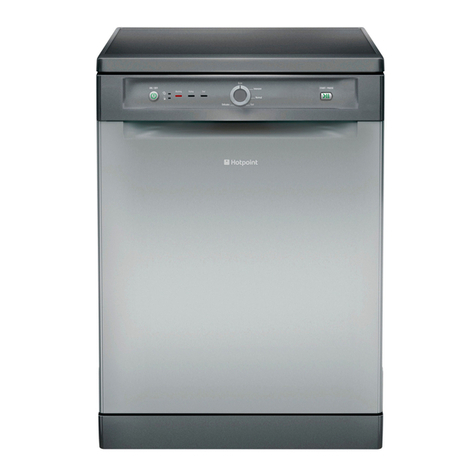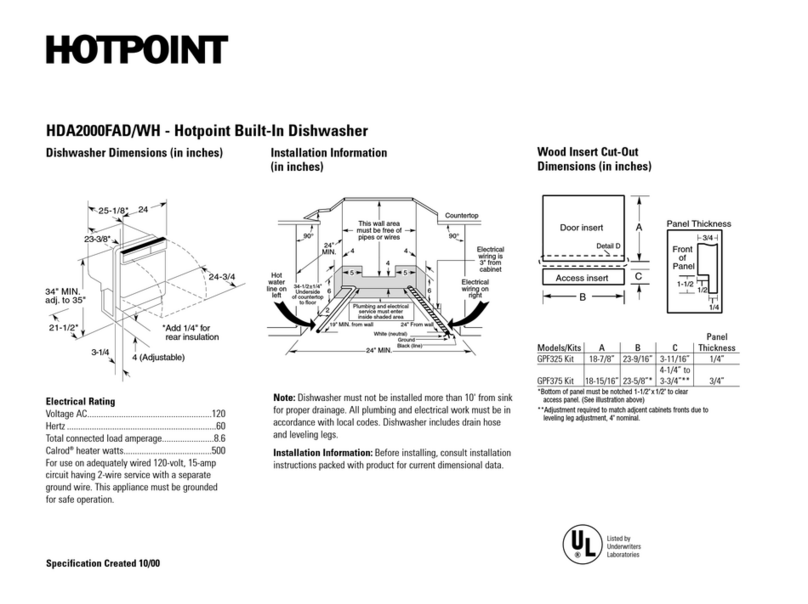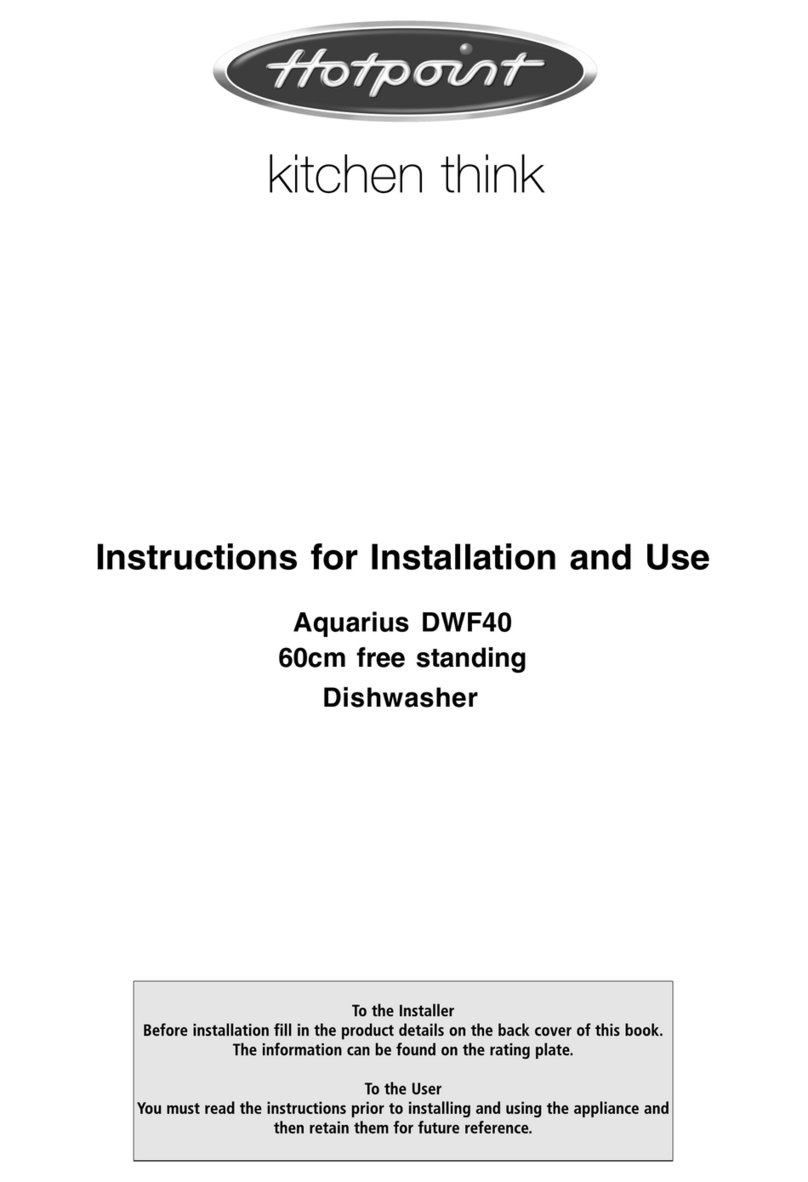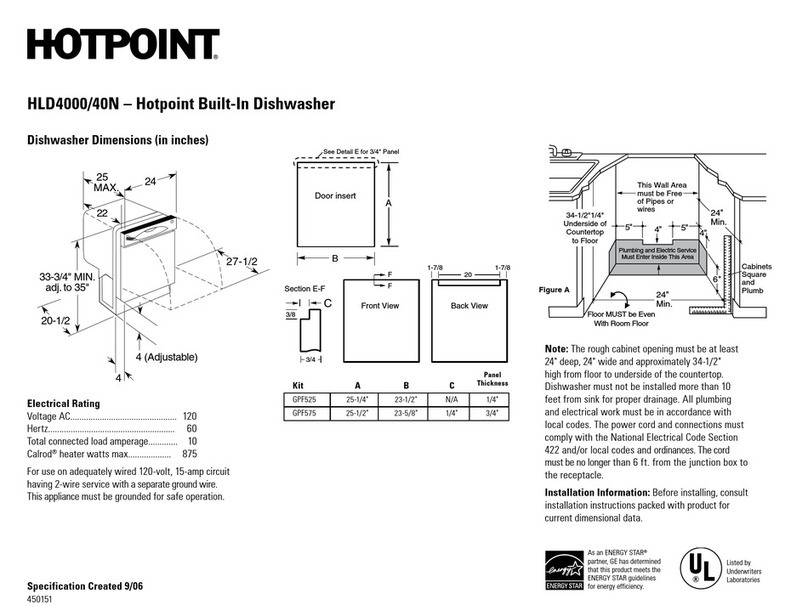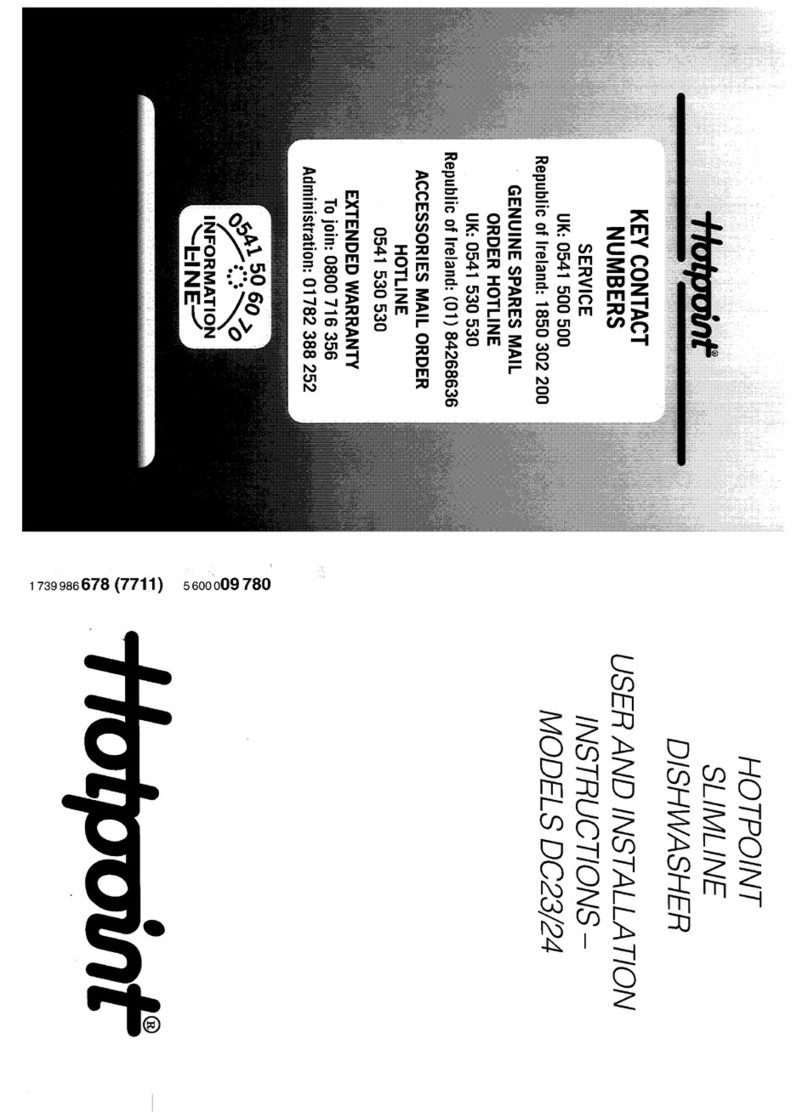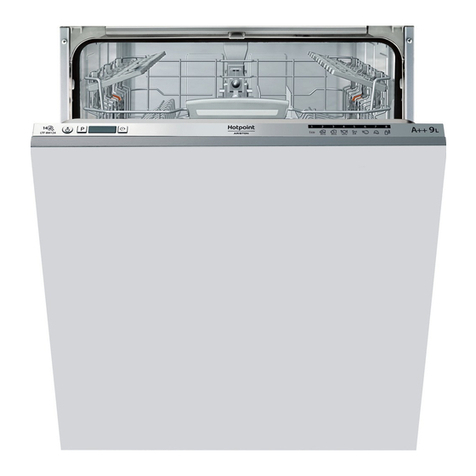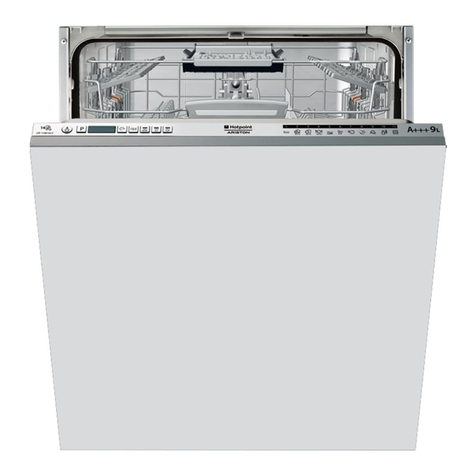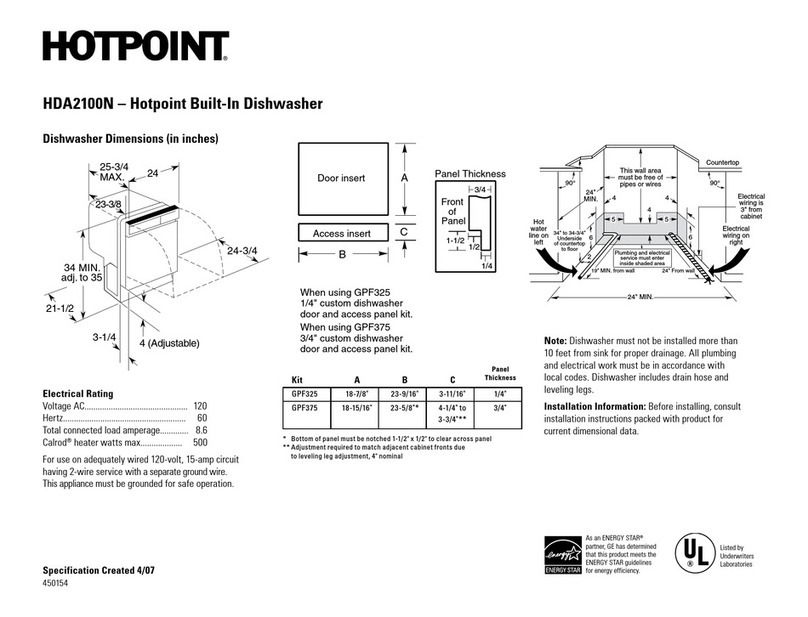8
EN
Start-upanduse
Measuring out the detergent
A good wash result also depends on the correct amount of
detergent being used; exceeding the stated amount does
not result in a more effective wash and increases
environmental pollution.
Only use detergent which has been specifically designed
for dishwashers.
DO NOT USE washing up liquid.
Using excessive detergent may result in foam residue
remaining in the machine after the cycle has ended.
Toachieve the best results from eachwashingand drying
cycle, powder detergent, rinse aid liquid and salt should be
used.
Compartment A: Washing detergent
Compartment B: Pre-wash detergent
1. Open cover C by pressing button
D.
2. Pour in the detergent after
consultingthe
Tableof wash cycles
:
• For powder detergent use
compartmentsA and B.
• For detergent in tablet form: when
thecycle requires1 tablet, place it in
compartmentA and close the cover;
whenit requires 2,place the second
tabletat the bottom of the appliance.
3.Removedetergentresiduesfromtheedgesofthe compartment
andclose the coveruntil it clicks.
AB
D
C
*Onlyavailable in selected models.
Switchingtheapplianceonfor the first time
Selecting the language
Press the ON/OFF button, you will hear a short beep and the
displaywill show the set language.
Usethe DELAYEDSTART button to scroll forwards, or the HALF
LOADbutton toscroll backwardsthrough thelist untilyou reach
thedesiredlanguage. Press thePbuttonto confirm theselection;
youwill then automatically enter the list of washcycles.
Everytime the dishwasher is switched on subsequently, the list
of wash cycles will be displayed.
Thelanguage may also be changedat a later date, bypressing
theP buttonand the DELAYEDSTART buttonsimultaneously for
a few seconds.
Starting the dishwasher
1. Turn the water tap on.
2. Press the ON/OFF button: you will hear a short beep and the
displaywill light up.
3. Open the door and pour in a suitable amount of detergent
(
seebelow
).
4. Load the racks (
see Loading the racks
) and shut the door.
5.Select thewash cycle inaccordance withthe typeof crockery
and its soil level (
see Table of wash cycles
)by pressing the P
button.
6.Select the wash options (
seeadjacent information
).
7. Start the cycle by pressing the Start button: a long beep
signals the start of the wash cycle; the name of the selected
cycleis displayed,along withthe timeremaining until the end of
thecycle.
8. Two short beeps and one long one indicate the end of the
washcycleandthetext“ENDOFCYCLE”appearsonthedisplay.
Switchoff the applianceby pressingthe ON/OFF button,shut off
the water valve and unplug the appliance from the electricity
socket.
9.Wait for a few minutes before removing thecrockery, in order
toavoid burns.Unload theracks, beginningwith thelower level.
AUTO WASH CYCLES*:this model of dishwasher is
equipped with a special sensor which can be used to assess
thelevelof soilingandautomatically selectthemost efficientand
economicwash cycleaccordingly.
The duration of the auto wash cycles may vary due to the
operationof the sensor.
- The machine will switch off automatically during
certain periods of inactivity, in order to minimise
electricity consumption.
Modifying a wash cycle in progress
Ifa mistake wasmade during the wash cycle selection process
it is possible to change the cycle, provided that it has only just
begun:once the wash cycle has started, switchoff themachine
by pressing and holding the ON/OFF/Reset button. Switch it
back on using the same button and select the desired wash
cycleand options.
Adding extra crockery
Press the Start/Pause button (the corresponding indicator light
will flash). Open the door, taking care to avoid the escaping
steam, and place the crockery inside the appliance. Press the
Start/Pause button (fixed light): the cycle will restart after a
prolongedbeep is emitted.
Wash options*
The OPTIONS may only be set, modified or reset after the
wash cycle has been selected and before the Start/
Pause button has been pressed.
Only the options which are compatible with the type of wash
cycleset maybe selected.If an option is not compatible withthe
selectedwashcycle (seeTableof washcycles),the correspond-
ing LED flashes rapidly 3 times and 2 short beeps will sound.
Ifan option is selected whichis incompatiblewith another (previ-
ously selected) option, the indicator light corresponding to the
optionselectedfirstwill flash 3times,3beeps will soundanditwill
bedeselected,whilethe most recentlyselectedoptionwillremain
active.
To deselect an option which has been set by mistake, press the
correspondingbutton again.
If the Start/Pause button is pressed so as to pause the
machine,thewashcycleor the Delayed Startfunction(ifselected)
isinterrupted.
At this stage it is not possible to change the wash cycle.
Accidental interruptions
Ifthe dooris openedduring thewash cycle,or ifthere is a power
cut,the cycle stops.It starts again from the point at which it was
interrupted once the door has been shut or once the electricity
supply is restored.
